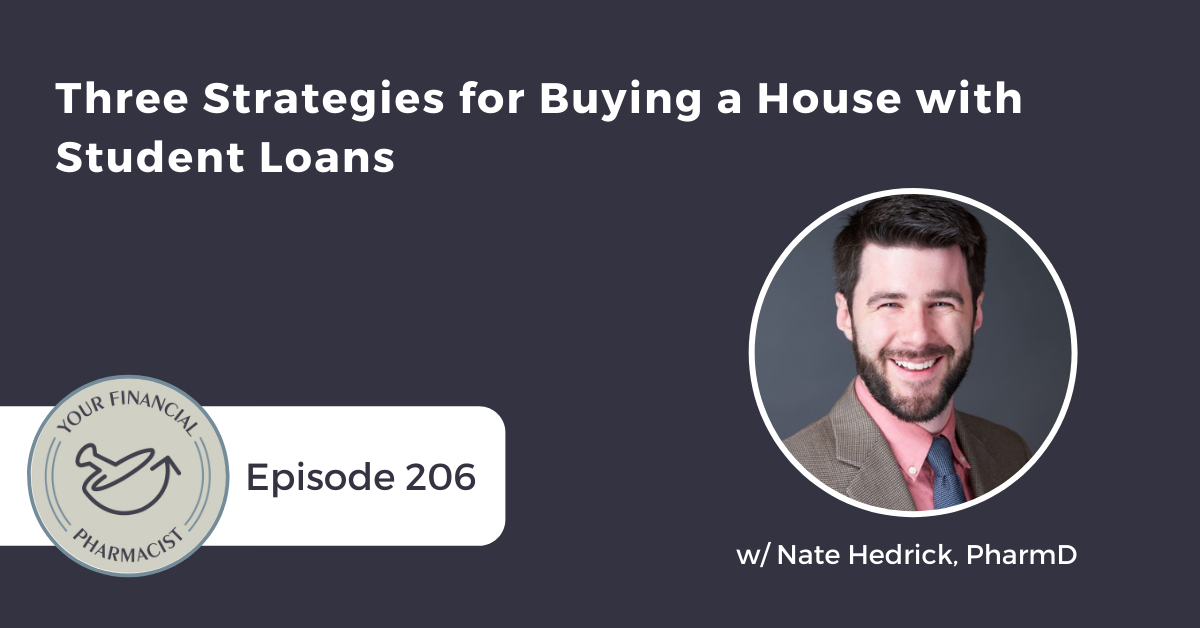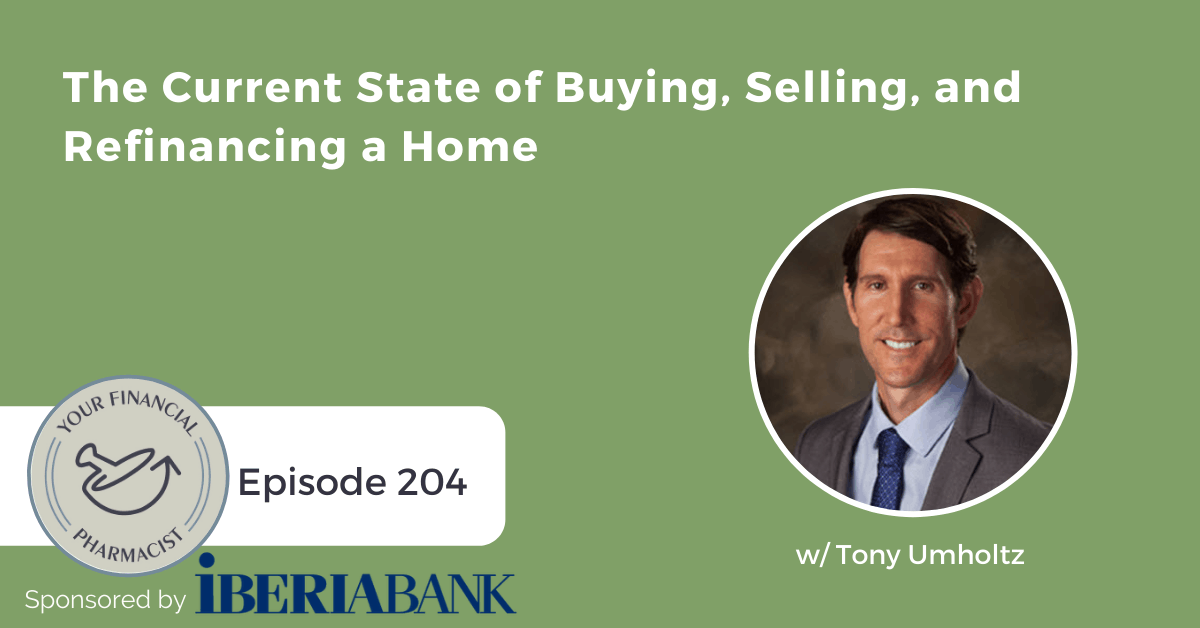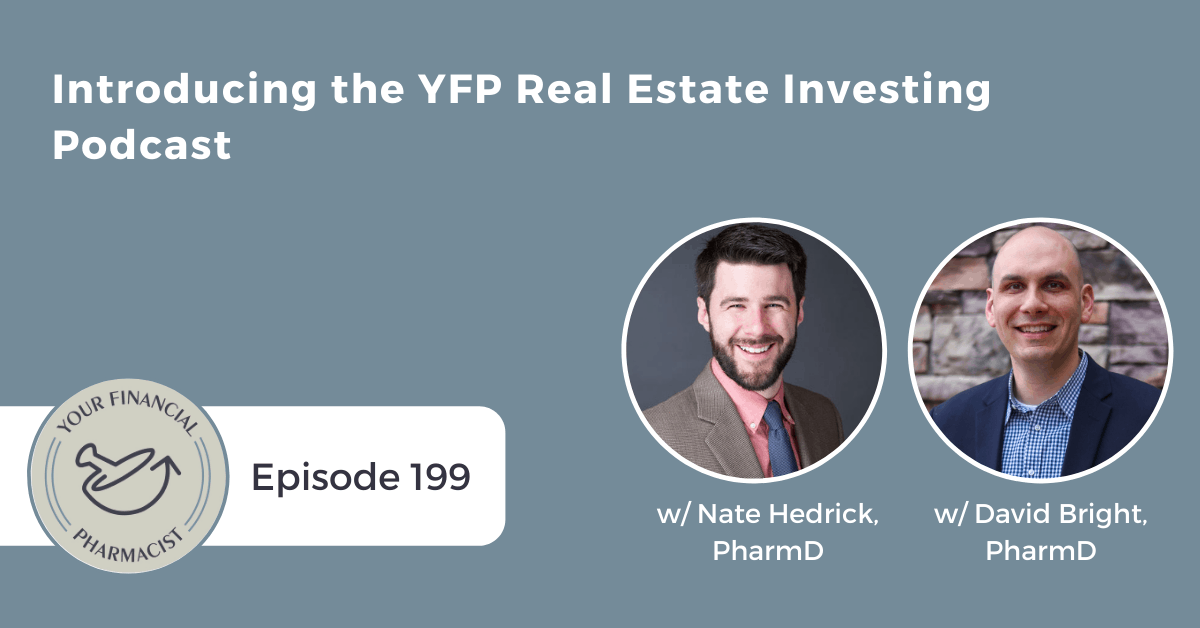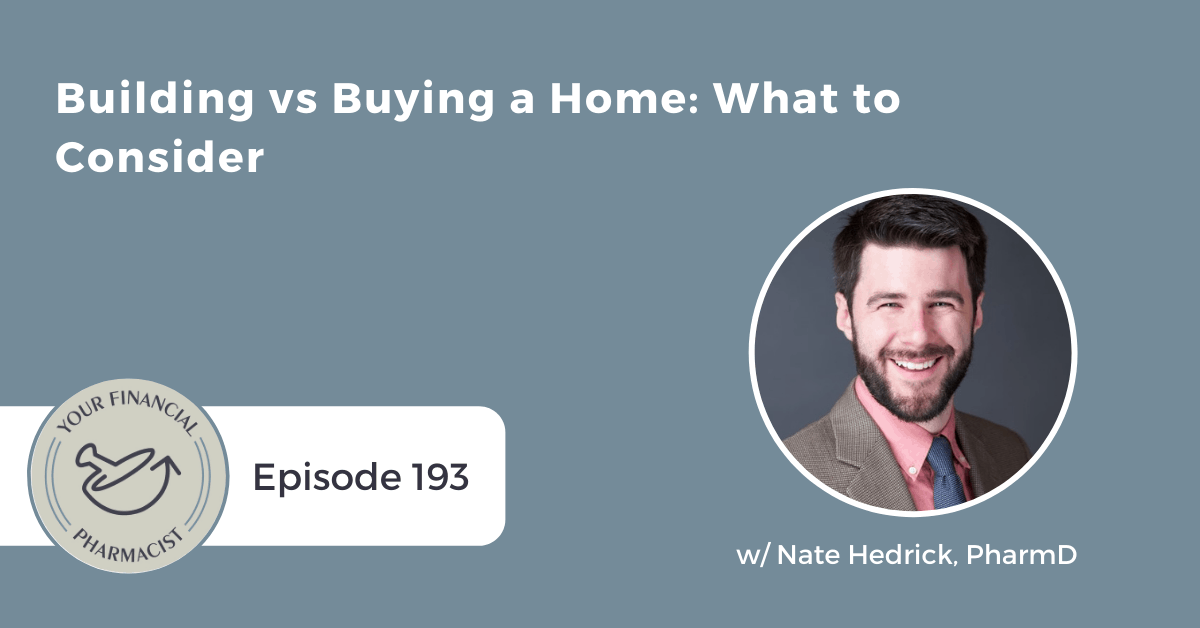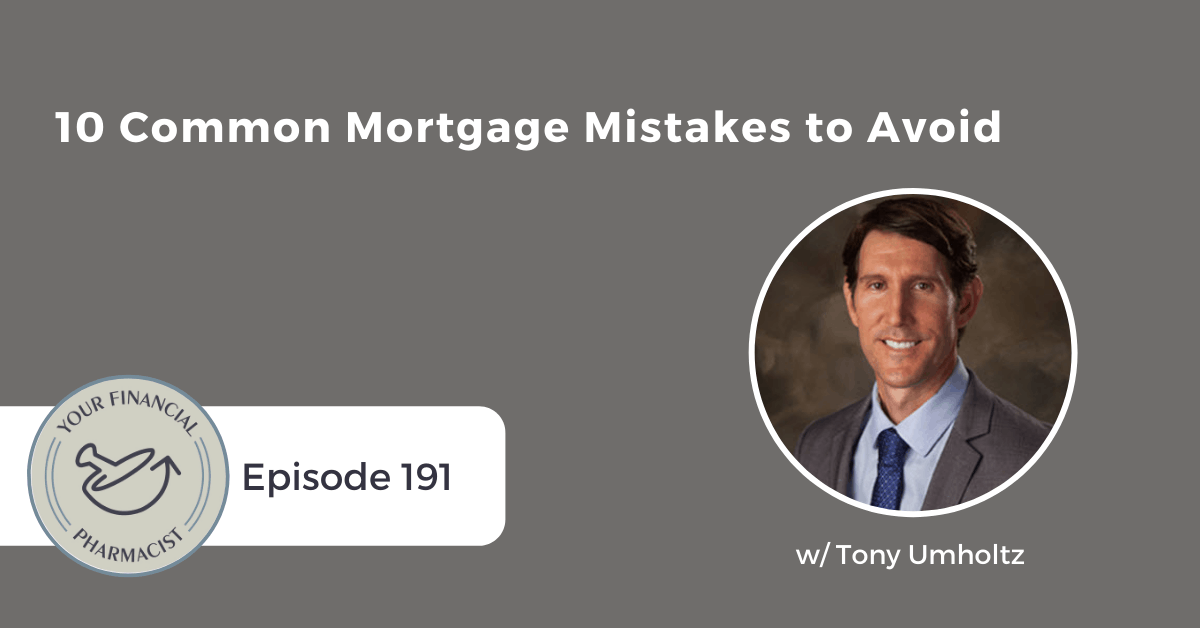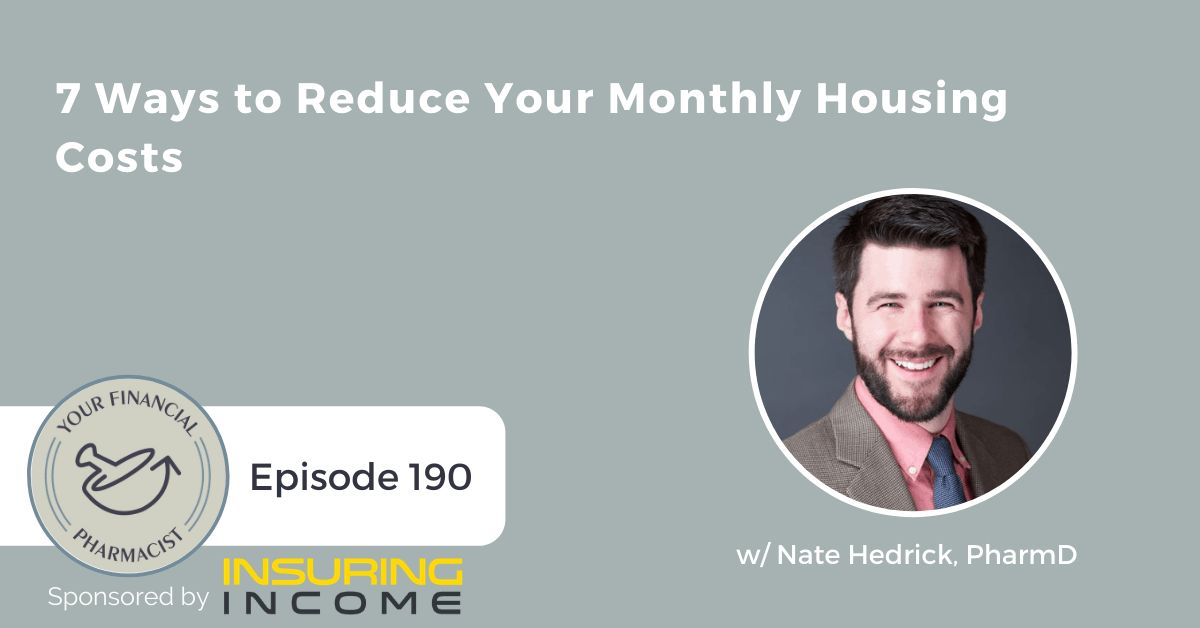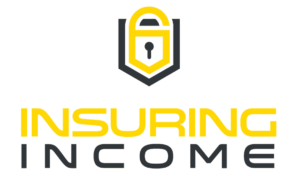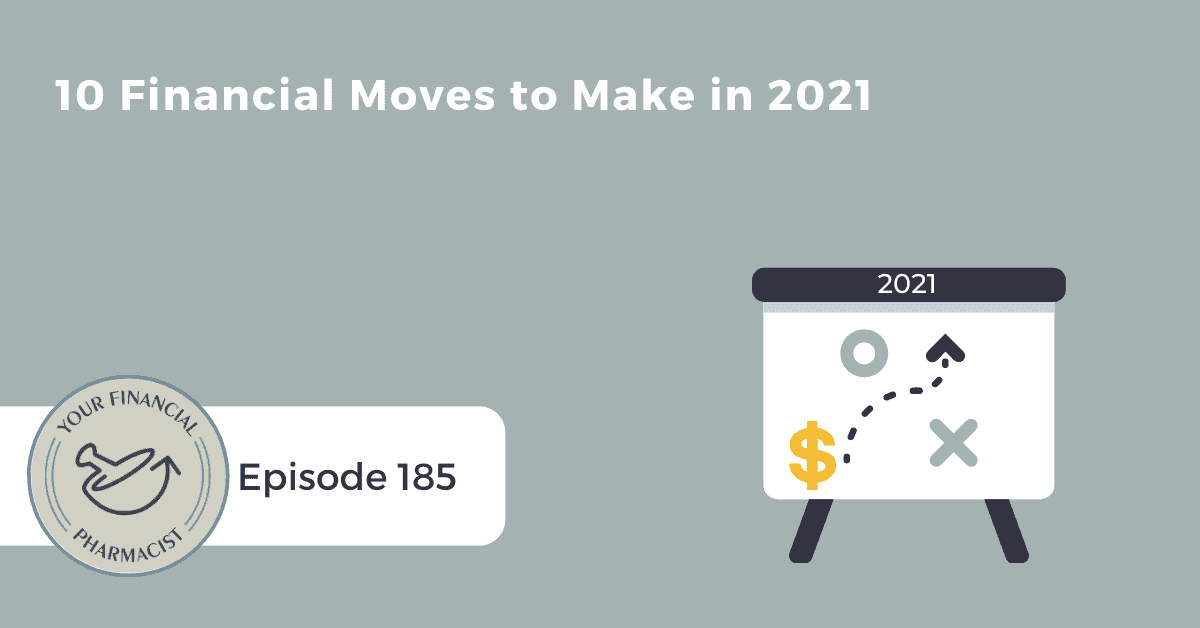5 Steps to Get Ready for a Home Purchase
On this episode, sponsored by IBERIABANK/First Horizon, Tony Umholtz talks through five steps for getting ready for a home purchase.
About Today’s Guest
Tony graduated Cum Laude from the University of South Florida with a B.S. in Finance from the Muma College of Business. He then went on to complete his MBA. While at USF, Tony was part of the inaugural football team in 1997. He earned both Academic and AP All-American Honors during his collegiate career. After college, Tony had the opportunity to sign contracts with several NFL teams including the Tennessee Titans, New York Giants, and the New England Patriots. Being active in the community is also important to Tony. He has served or serves as a board member for several charitable and non-profit organizations including board member for the Salvation Army, FCA Tampa Bay, and the USF National Alumni Association. Having orchestrated over $1.1 billion in lending volume during his career, Tony has consistently been ranked as one of the top mortgage loan officers in the industry by the Scotsman’s Guide, Mortgage Executive magazine, and Mortgage Originator magazine.
Episode Summary
If you are considering purchasing a home in the next six to twelve months, today’s episode with mortgage manager Tony Umholtz will equip you with the information you need to prepare for this exciting journey. Tony shares his knowledge about the importance of understanding interest rates, where to find the most up-to-date information on those rates, how to determine your home-buying budget without the lender setting it for you, and criteria used by the lender to calculate your maximum loan amount. Tony also shares the best time to get pre-approved and things to look for in a lender when going through the home-buying process. The discussion covers the five key steps to follow to ensure that you are ready to purchase a home including, understanding the landscape, knowing your budget, getting pre-approval, choosing a lender, and knowing which documents you need to provide once the property is under contract. If you have questions about interest rates, the difference between pre-approval and pre-qualification, the various types of lenders that you can work with, the pros and cons of putting a 20% down payment on a home, the 28/36 rule, or anything to do with credit scores, you’ve come to the right place!
Key Points From This Episode
- Why now is a good time to buy a home.
- Where you can find out the average interest rates in the home loan industry.
- Tony explains what discount points are and why you need to understand them.
- The importance of reading the fine print.
- Know your budget!
- How lenders determine how much they are going to lend.
- What the 28/36 rule is.
- Tony runs through the pros and cons of a 20% down payment.
- How savvy investors look at returns.
- Comparing pre-approval and pre-qualification.
- The value of a credit report.
- How lenders work out your credit score, and why this differs from what you will see if you use a monitoring service.
- Examples of the different types of lenders that exist.
- Information that you will need to provide to the lender you choose once you have a property under contract.
Highlights
“Lenders look at your gross income. We don’t factor in your after-tax income.” — Tony Umholtz [0:09:23]
“I’m a big believer in being diversified.” — Tony Umholtz [0:10:51]
“The higher your credit score, the better your rates tend to be.” — Tony Umholtz [0:23:12]
“There are advantages and disadvantages for every type of lender that’s out there. So, it’s good to know, get some recommendations, and also to compare the products and make sure it’s a fit for you and that you feel comfortable with the group that you’re working with.” — Tony Umholtz [0:27:20]
Links Mentioned in Today’s Episode
- Learn More About IBERIABANK/First Horizon’s Pharmacist Home Loan and Start the Pre-Approval Process
- YFP Planning: Financial Planning for Pharmacists
- 5 Steps to Getting a Home Loan
- YFP 216: Common Credit Blunders to Avoid When Buying a Home
- Freddie Mac
- Fannie Mae
- Your Financial Pharmacist Disclaimer and Disclosures
Episode Transcript
[00:00:00] TU: Hey everybody, Tim Ulbrick here and thank you for listening to The YFP Podcast where each week, we strive to inspire and encourage you on your path towards achieving financial freedom.
This week, I had a chance to welcome back onto the show Tony Umholtz, a mortgage manager for IBERIABANK/First Horizon. During the interview, Tony and I talked through five steps to getting ready for a home purchase. So, for those that are listening and thinking about a home purchase in the next 6 to 12 months, this episode is certainly for you.
On the show, we discuss the importance of understanding interest rates and how you can find the most up-to-date rate information. We also discuss how to determine your home-buying budget and the criteria used by the lender to determine your maximum loan amount. When is the best time to get pre-approved and what is the difference between pre-approval and pre-qualification? And finally, what to look for when shopping around lenders and going through the application process.
Now, before we hear from today’s sponsor, and then jump into the show, I recognize that many listeners may not be aware of what the team at YFP Planning does in working one on one with more than 240 households in 40 Plus states. YFP planning offers fee only, high touch financial planning that is customized for the pharmacy professional. If you’re interested in learning more about how working one on one with a certified financial planner may help you achieve your financial goals, you can book a free discovery call at yfpplanning.com.
Whether or not YFP Planning’s Financial Planning Services are a good fit for you, know that we appreciate your support of this podcast and our mission to help pharmacists achieve financial freedom.
Okay, let’s hear from today’s sponsor, IBERIABANK/First Horizon and then we’ll jump into my interview with Tony.
[SPONSOR MESSAGE]
[00:01:42] SPEAKER: Does saving 20 percent for a down payment on a home feels like an uphill battle? It’s no secret that pharmacists have a lot of competing financial priorities including high student loan debt, meaning that saving 20 percent for a down payment may take years. We’ve been on the hunt for a solution for pharmacists that are ready to purchase a home with a lower down payment and are happy to have found that option with IBERIABANK/First Horizon. IBERIABANK/First Horizon offers a professional home loan option AKA a doctor or pharmacist home loan that requires a 3 percent down payment for a single family or townhome has no PMI and offers a 30-year fixed rate mortgage on home loans up to $540,250. The pharmacist home loan is available in all states except Alaska and Hawaii. To check out the requirements for IBERIABANK/First Horizon’s pharmacist home loan, and to start the preapproval process, visit yourfinancialpharmacist.com/homeloan. Again, that’s yourfinancialpharmacist.com/homeloan.
[INTRODUCTION]
[00:02:46] TU: Tony, welcome back to the show.
[00:02:48] TU: Tim, thanks for having me. Always good to be here.
[00:02:51] TU: Excited to jump into this episode, you’ve been a frequent guest on the show. Last episode we had you on was episode 216, where we talked about common credit blunders to avoid when buying a home. We’re going to link to that in the show notes and dig in some more detail on that topic as well during this episode. So Tony, give us the update. What are you seeing out there in the housing market? It’s been a wild year, right?
[00:03:14] TU: It has been a crazy year. It really has been. A lot of the same things we’ve seen before in the past, the inventory levels are still fairly tight and rates are still low. The one thing I will mention is you know is more of a timing thing for the time of year in the season we’re in, is the autumn in the fall is typically – there’s a little bit less buyers out there. We have Thanksgiving and the holidays around Christmas. Typically, there are less buyers, a little bit less competition. So, it’s often a better time to buy because there are less buyers you’re competing with.
[00:03:51] TU: I think that may be true for many folks in our community that perhaps we’re shooting for a spring or summer home purchase. Maybe they got delayed because of the inventory issue that is well known that’s out there. So today, we’re going to be digging into five steps that folks can take to get ready for a home purchase. We’re going to be talking through evaluating loan options, finding a lender, saving for a down payment, and running the numbers for your budget. So, if you’re thinking about buying a home in the next 6 to 12 months, this episode is really designed for you. If you think combined is in your future, whether that’s now or down the road, my hope is you’ll be able to pull some tips and lessons away from this episode to help you prepare for that journey.
No need to take notes. You can head on over to yourfinancialpharmacist.com/home-loan. We’ve got an extensive resource at that site. You’ll be able to check out a lot of what we’ve referenced today. So Tony, five steps to get ready for home purchase. Number one, know the landscape. So, before you’ve been shopping around for lenders, it’s helpful to have a general idea of what’s going on in terms of mortgage, interest rates, what the market is. So, what do we generally seeing right now Tony, and knowing these, of course are subject to change, and where can someone go to research those rates?
[00:05:05] TU: Well, it’s a good question here, Tim. The first step, just to kind of get a very broad view of the landscape would be, you can actually go to Freddie Mac, freddiemac.com, and Fannie Mae, they actually post rates, but it’s an average rate. So, it’s an average industry rate. You can also find it like in The Wall Street Journal. Clearly online, you can find it but you would look for the weekly average rate, and by Fannie or Freddie Mac. Freddie Mac quotes typically have points in them. So, you do have to look at the fine print with that, that it’s an average rate, kind of a consensus of the industry to tell you where rates are, like a rough idea of where they are, but they’re often quoted with points. So, keep that in mind, because your lender may quote you something the same or a little higher, but it does not have points. That’s just kind of a good place to start, Tim.
[00:05:58] TU: Tony, I’m looking at those rates right now. So, at the freddiemac.com/pmms, we’ll link that in the show notes. So, showing 30-year 3.14 percent, 15-year 2.37 percent, a five-one-year arm, 2.56. And then what’s neat about this is you can look at the trends over the year, 3 years, 5 years, 10 years. And then also let you know what has changed within the last week or the last year. I didn’t know that about points in terms of how these are reported. Some folks may be looking at these and not thinking about the points or what that means in terms of expenses for them. So, just give us a quick definition of points and why it’s important that folks understand that as they’re trying to compare rates, and perhaps get to that apples to apples comparison.
[00:06:41] TU: Sure. Points are actually called discount points. They’re an upfront fee that the lender will charge and it is often a charge in the form of prepaid interest. And that helps you get a little bit better interest rate. But that is a percentage of the loan amount. So, it can be costly. Let’s say, it’s 0.3 percent of a loan amount, if you’re borrowing $400,000, well, that’s $1,200 in additional fees, you’re going to pay if you were to obtain that loan. So, you do have to be aware of points in fees as that is a big component. And then lenders all have different origination fees. That’s another segment of the costs and those are things that you want to look at too, because not all rates are equal, right? There are a lot of pieces of mail people will get. I’ll just leave it at that. There’s a lot of mailers you get with that will quote these really low rates, but then if you read in the fine print, you’ll see how much fees are charged. So, you really want to be aware of that because your payback period could be so long, and it makes no sense to pay points, and often it doesn’t.
[00:07:49] TU: So that’s number one, know the landscape. Number two, a topic we’ve talked about before when we’ve had you on the show, know your budget, and before thinking about pre-approval, it’s important to know your budget, as well as knowing how a lender is going to determine what they’re going to borrow to you in terms of that home-buying purchase. And those things can be an often perhaps should be different as you evaluate what fits in your budget and the lenders looking at what they’re comfortable in terms of you borrowing. So, down payment isn’t certainly is not the only cost. But Tony, talk to us about lenders, in terms of how they determine how much they can lend to individuals or to couples. And I think here, it’s worth talking about the 28:36 rule.
[00:08:37] TU: Sure. I mean, this step is is critical, right? You clearly want to review your own budget and know what you can and can’t afford, because even if a lender can qualify you for a certain payment, that may not be something you’re comfortable with, so it’s very important to evaluate your own budget. Lenders do look. There is, obviously, the 28:36 rule, and this ties back to what lenders can qualify you for, but often we can qualify people up to a back-end ratio, which is a total debt ratio of 45 percent, sometimes even 50 percent with enough down payment. So clearly, we can often maybe qualify you for more than you want to borrow.
The other component to this too, that’s very important to know is that lenders look at your gross income. We don’t factor in your after-tax income. So, that’s another method that we all look at in our industry. We use your your gross income that you report on your W-2, or the gross income before taxation. Same thing if you’re self-employed, we look at your gross income prior to to income tax. So, that helps people buy homes and afford homes, but it is a factor to consider when you’re running your budget. But historically, those numbers, we do go a little higher. Nowadays, instead of 36 which is – I think, let me just dive into what that means.
So, the 28 percent is called the housing ratio. That’s the total amount of your monthly income that is allocated to a home payment, like a mortgage payment on a home. And that mortgage payment includes your principal and interest, and your taxes and insurance, and any other HOA expenses you might have. So, when you buy a home, you had your principal and interest payment on the mortgage, you have property taxes, that you typically pay 1/12, so a monthly amount of the total amount of property taxes on a monthly basis, and then your insurance. So your homeowners insurance.
And then some communities have what are called homeowner’s association fees, that might be $100 a month or $100 a quarter, just depends on where you live. And those are all part of the housing expense. So, when Tim referenced the 28 percent, what that means is your total income, so let’s say you made it just for round numbers, let’s say you made 10,000 gross income as a household per month, we would use 2,800 as your housing expense. I’m not saying that that’s what you need to do. You can actually go a little higher, and of course, you can go lower. But that’s kind of the metric that historically lenders have looked at.
And then the back-end ratio means your total debt. So, that’s going to be the aggregate of all your other debts. So, your car payments, if you have auto payments, on auto loans, student loan payments, we take your student loan payment, any credit card payments you might have, and any other installment loans you may have. It does not include car insurance. Auto insurance, or cell phone bills, things like that, utilities, it does not include those at this juncture. So, we don’t look at those expenses. But that is going to be the aggregate of all of your debts and you cannot exceed that. We call it the debt to income ratio. So, that’s a very critical metric that lenders look at when they’re evaluating you for your pre-approval. That’s kind of a high level of what we would look at.
[00:12:10] TU: Tony relevant to our audience, if I zoom out for a moment, we’ve seen somewhat of a stagnation of pharmacist’s salaries, obviously, that’s very dependent upon the field and someone’s career trajectory. While we’ve seen a significant bump up in home prices, as well, as you know, I just read an article the other day in the journal about home insurance, homeowners insurance costs going up. So, if we think about what’s involved in that 28 to 36, rule 28 percent, again, being maximum monthly housing expenses, 36 percent would be maximum monthly gross income going to all debts, as you alluded to, and of course, student loan debt, has been going up, as our listeners know, too well.
So, these do have implications for our audience, in terms of understanding these rules, what’s involved and to your comment, just to reinforce it, the number that gets spit out by the lender, may or may not be in line with the budget and the rest of the goals. So, we’ve got to take a step back and determine what makes sense in the bigger picture.
Tony, one of the most common questions we get is 20 percent down, yay or nay? What are the pros and cons of putting 20 percent down? I think the reason it’s top of mind for many is just the amount of time and savings it can take to put 20 percent down. So, if I’m buying a $400,000 home, I stay true to that rule of thumb of 20 percent, looking at $80,000, I’ve got $200,000 of student loan debt, I’ve got other competing priorities. That takes time, to be able to do that. From your perspective, what are some of the things that you think about in terms of the pros and cons of that 20 percent down payment?
[00:13:46] TU: Well, you’re exactly right. It can take a long time to save 20 percent. This is a question that comes up a lot. Let’s start with the pro. Let’s look at the pros first. I mean, clearly, you’re going to owe less on your mortgage if you put 20 percent down. So, your payment would be slightly lower. But it’s not that much lower because interest rates are so low. So, that additional 20 percent is really not buying you much of a lower payment. It might be, maybe $100 a month, or something to that effect, maybe $200 depending on the price of the home, but it’s not going to be a substantial amount for the amount you’re putting down. So, that’s one pro clear, I’m going back to the pros, is you owe less.
The other thing is if you’re not a, for example, pharmacists, we have some programs that you can avoid PMI, which we can address later. But if you’re not, let’s say you’re in my role, you I don’t have a PMI option for my career path. So, 20 percent down would help a lot of people avoid PMI. So, clearly that’s a pro. And then, the other thing you owe less on your mortgage so you have a little bit more margin there. Those would be some of the pros. You can also maybe afford more home, because your payments lower, or you’re allowed a higher debt to income ratio, because I did reference earlier, we can often even get approvals up to 50 percent. Well, if you put 20 percent down, there’s going to be no constraints from the MI company or the lender’s underwriting, for example, they may allow you to go to a higher level, because 20 percent down frees you up. If you have great credit, and you’re putting a nice down payment, you can actually get a higher debt to income ratio, often, approved.
So, those would be some of the pros, Tim, of putting 20 percent down. Some of the cons, clearly, one is just how long it takes to save the funds, and that plays into a whole bunch of other things, too, that I see quite often. Number one, you could use that, those proceeds to pay off higher interest rate debt, because mortgage rates are low plus, the mortgage interest is often tax deductible as well. So, you’re really not even paying the actual note rate you’re paying in many cases, so you could use that extra money to pay off other higher interest rate debt, whether it’s auto loans, student loans or credit cards.
The other thing is home repairs, upgrades, if you’re looking to remodel, it’s very common right now. People will say, “Hey, I want to redo the flooring in the kitchen.” And that gives them greater margin to do that. They’ll have their own money, they can actually get into the home, acquire it with less money down. And then of course, they can do all those things they want to do the house which creates value. One thing just to address with like investment, a home is more of a lifestyle to place to live. It’s an alternative to renting, but if we do work with some savvy investors, too. I have referenced before on this climb. I’m doing this for 20 years. I’m getting kind of old. I have quite a few investor clients. And I’ve noticed over the years that some of the savvier investors look at their returns differently than a lot of us would, right?
For example, just think about this. I mean, the average appreciation, let’s take out the last few years it’s been way above this. But normally it’s like 3.5 percent to 5 percent a year, is kind of historical, average appreciation for homes over time. If you were to find a home, let’s say you bought a 400,000 home, and you put 5 percent down such that’s going to be a $20,000 down payment. Okay. Well, let’s say that house, the following year is worth 420. Well, you just made 100 percent return on your investment. You only put 20,000 down to secure the home. And now your home’s worth 420, you just made 100 percent return in one year. I mean, it’s an incredible return, right?
Where if you put 20 percent down, you would have made roughly a 25 percent return, right? So, it’s still a good return, but not the same return. That’s how a lot of the investors that are out there, look at their returns on real estate. So, institutional investors look at it that way. But even us we can look at that way, you know, because that’s what we invested truly, and we put down $20,000 to buy that 400,000 home. And now we’ve made 20,000 in equity. So, we’ve doubled our investment in that case. Versus if we put 80,000 down, which would be 20 percent down, and we made 20,000 and we got a 25 percent return.
So clearly, the con is you don’t get the same returns, right? Your return is not as high. I think I’ll add one more thing to that with returns is, you could also use it for other investments. For example, the team at YFP, IRAs, Roth IRAs, there’s a lot of other alternatives out there to diversify, instead of putting all your money into real estate. I’m a big believer in being diversified. So, I think, clearly a con, if that’s a lot of your net worth that 20 percent, you’re putting it all into one asset may not be the wisest thing. So, those are just some cons there, Tim, to consider. And I guess, as we compare those options.
[00:19:09] TU: Tony, you’re alluding to two really important concepts that tie into the financial plan, which is leverage and opportunity costs, right? Any purchase and financial decision we make, there’s an opportunity costs or an evaluation of an opportunity cost. Here we’re talking about putting more money into a home that might be used elsewhere. I think that for many of our folks, this is a time to do some self-reflection evaluation as you look at risk tolerance, as you look at other goals that you have, looking at student loan debt, looking at your long-term investment retirement picture. That’s one of the things I think the team at YFP Planning does so well with the financial planning clients is help them look at a decision like a home purchase decision, have these conversations about appropriate amounts of leverage and the other goals that they’re trying to achieve, and then help coach through that decision making while looking at home buying in the context of the rest of the financial plan.
I think this is a good place, Tony, that we just remind folks, that down payment, of course, is not the only expense we need to be thinking about, right? We’ve talked about this on the show before, you know, earnest money, closing costs. So, what you’re going to need in some to come at the table to close, but then also, beyond just the ongoing monthly payment, which you mentioned, the PITI concept. So, principal, interest, taxes and insurance, what about everything else associated with that home purchase? So, whether that’s maintenance, and upkeep, and things that you expect, remodeling, finishes, landscaping, equipment that you need for the home, now that you have that home purchase. Really taking a step back, especially for those that might be currently in a renting situation to say, “What’s the total cost? And are we ready financially to make this decision?”
So, that’s number two, is knowing the budget. Number three is getting prepared -approved. So, once you’ve done some research to understand rates, created a budget, safer down payment and some of the other costs I just mentioned, next up is getting pre-approved. Tony, why is the pre-approval process so important? What is it? And how is that different from pre-qualification?
[00:21:09] TU: Well, the pre-qualification is typically a very easy thing that can be done. But unfortunately, this doesn’t carry a lot of weight. So, the key differences are, an actual pre-approval is going to be when a lender looks at your credit report, and then also looks at your income. So, it’s not just looking at credit, it’s actually asking for a pay stub, for example, and we verified your pay stub. Where pre-qualification, you don’t even run credit, you just put in what your expenses are, and tell the lender what your income is, and say, “Okay, great, you’re pre-qualified”, that doesn’t carry a lot of weight in the real estate community.
We talked to a lot of realtors, they call us a lot of times on offers, the listing agents do when they receive an offer and the buyer will include our letter, our pre-approval letter and ask some – they want to know that the client is qualified because it’s a competitive marketplace, and they don’t want their properties being tied up. So, the key difference is the lender has run credit, has reviewed your income. Those are the key differences there between the two.
The other thing that the pre-approval, I mean, that really brings value that I’ve seen over the years is the credit report. I want to bring this up, because a lot of us follow our credit scores, whether it’s Credit Karma, or a lot of these other monitoring services that are out there. But they don’t truly give an accurate reading of what a creditor sees. They’ll give you a kind of a good idea of what your scores are doing, and like if they’re moving higher, then the trend is probably good for you. But they can often be 20 to 30 points, 40 points even lower than what a lender sees. Because we run all three bureaus, we don’t follow one.
So, the mortgage community runs a report that has all three bureaus, TransUnion, Equifax, and Experian and we use the median score. So, we use the median score of the three to determine your credit score. And the value that I think can come here is, clearly, you know your score, which can determine if you qualify, but also your interest rate, right? So, the higher your credit score, the better your rates tend to be. And some lenders, and not all lenders can do this, but some lenders have the ability to help you with rescoring.
Basically, they have a program where they can tell you what you can do to improve your score. And that’s been invaluable for many people that are home shopping right now that we’ve been able to get them either qualified or into a better program by telling them, “Hey, by the way, if you pay down this credit card, for example, your score will go up 20 points.” Or “If you consolidate this loan or whatever it might be, you can improve your credit by this much.” So, that’s been something that’s been helpful during the pre-approval process, Tim, that I’ve seen lately.
[00:23:56] TU: And that’s a good connection back to Episode 216, Tony, when you and I talked about common credit blunders to avoid when buying a home. Again, we’ll link to that in the show notes, but credit is such an important part of the home buying process for the reasons that you mentioned. So, really looking at any due to shore up credit and making sure that you’re understanding your credit scores and using the right tools, so that you’re not surprised when you get into that pre-approval process.
So, that’s number three, get pre-approved. Number four is comparing lenders. Tony, we know that not all lenders are created equal. Ultimately, we’ve got to make this decision of what lender am I going to work with? What type of loan am I going to pursue? I think sometimes these are recommendations that might come from an agent, might be recommendations that come from a family or a friend or coworker, might be a random internet search. So, I think it’s worth talking about what are some of the things that folks should look for in a lender?
Now, of course here, Tony, you’re representing IBERIABANK/First Horizon, and we’re talking about the pharmacist home loan products. So of course, there’s a vested interest in folks evaluating that option. But from your viewpoint, what are some of the things that folks should be looking for when choosing that lender?
[00:25:06] TU: Well, there’s quite a few different types of lenders out there, and all of them have varying pros and cons to working with. So, I could kind give you guys an idea of some of the lenders that are out there, you have what are called mortgage brokers who are true, almost like a middleman between lenders, and there’s pros and cons with working with those types of lenders, because they do have a lot of options where like a larger bank may not have as many options as a mortgage broker. But mortgage brokers tend to be more expensive. I find that they’re typically better when you have a really more tough case, whether it’s a credit score issue or some other issue, they can be more valuable than a bank in a lot of ways. Because they have some more greater flexibility.
Then you have the correspondent lenders, which are mortgage lenders that may have small branches in a city or a town. They’re not a bank, but they are able to lend directly to Fannie and Freddie. They use, not to get too complicated here, but they actually use bank warehouse lines to fund the loans, and then they’ll sell the loans, but they are true correspondent lender. And then of course, there’s banks. But there’s different types of banks, there’s large banks like the Citi groups and the Bank of America’s and Wells Fargo. And then there’s more of a medium sized bank, like the bank that I work for, and then there’s small community banks, too.
So, there’s lots of different sizes, and all have pros and cons. When you’re looking at mortgage lenders, programs are very important. The program that you can get is important. Rates are important as well. The other thing that’s very critical, is being able to fulfill the timelines, because there’s some challenges out there with certain types of lenders where they can’t meet the commitment letter deadline in the purchase contract, or they have a struggle with their appraisal process, or they have a struggle closing a loan in 30 days. Those are questions you need to ask the lender upfront, because different lenders had different operations. Some will actually use outsourced processing, which might be in another state, whether it’s not all under one roof, or the loan originator that you talk to may not have control over that process.
So, those are just some things to think through. But clearly, there are advantages and disadvantages for every type of lender that’s out there. So, it’s good to know, get some recommendations, and also to kind of compare the products and make sure it’s a fit for you and that you feel comfortable with the group that you’re working with. I think ultimately, that’s the most important thing, that you feel confident that they can help you and fulfill the closing date for you. That’s a key element.
[00:27:52] TU: Yeah, that’s a good reminder, Tony. Interest rates, of course, are very important for the reason we mentioned in terms of the length of the loan, and what that’s going to mean in terms of dollars out of pocket. But don’t overlook some of those things about abilities around appraisal and underwriting and closing on time and communication, and making sure that you feel comfortable. There’s, of course, going to be some open communication. There’s a lot of things that need to get done in a short amount of time.
So, I think it’s a good place to highlight the pharmacist home loan product that is offered, Tony, through your organization at IBERIABANK/First Horizon. We’re seeing a lot of interest in the pharmacist community about this product, which many listening might have heard of doctor type of loans and think, “Hey, I’m a pharmacist. I’m not eligible for that.” And here with IBERIABANK/First Horizon, we have an opportunity that is available to pharmacists. So, talk to us more about that program in terms of down payment, what’s involved or not with PMI, maximum loan amounts and where this option is available in terms of where folks may live?
[00:28:58] TU: Sure, sure. Well, this product is often a great solution, and it’s been really fun to be able to help so many people with this program. It is somewhat unique in that you can put very little down payment and not have PMI and still have very aggressive interest rates too. So, to kind of just highlight the program overall is, if you’re a first-time homebuyer, first time buying, you can put as little as 3 percent down. And of course, there’s no PMI. If you’ve owned a home before, it’s 5 percent down. You’d have to put a 5 percent down payment and the no mortgage insurance clearly is an advantage. But the other thing too is oftentimes the rates on this program, the 30-year rate that we offer on it is often better than my 20 percent down rate. So, you’re still getting a really competitive rate and priced very, very well. As far as the minimum credit score is 700. So, there is a minimum credit score you have to be above 700. There’s no like clear reserve requirement. What that means is having extra money reserves of payments in your bank account or investments, which is nice too, for a lot of first-time homebuyers and those that are buying their first home.
But the other piece about the loan limits that Tim referenced, currently, our loan limit on this product is 548,250. But that’s about to change. I think we’re probably looking at at least 625,000 starting January 1, 2022. So, we’re going to see a nice bump up. It may even be higher than that, and that’ll be across the country. So, this program is available in basically the 48 lower states. Alaska and Hawaii are the only two states that we’re not licensed in, but we can offer it in 48 states. So, it’s a nice footprint that we can help and we’ve helped individuals in pretty much every state, I think, that I referenced.
But the loan limit thing is exciting, because I think that’s going to enable a lot more people to buy in higher priced areas. And we may even see that go higher than that in certain areas that are even higher priced. And there are certain parts of the country that priced markets, housing prices are much higher, clearly in California, in and around DC, Northern Virginia. So, those are some places where this could be even higher than 625. So yeah, it’s exciting to see a little bit of a move higher there.
[00:31:19] TU: So sorry to our friends of YFP in Alaska or Hawaii, as Tony mentioned, this is available in the lower 48. We’ve got more information that goes into more detail on what Tony just shared there. You can find that at yourfinancialpharmacist.com/home-loan. And again, that’s a summary of much of what we’re talking about here on this episode as well.
So Tony, we’ve talked so far about knowing the landscape of interest rates. We referenced the Freddie Mac resource, folks can go to find that information, making sure that they’re considering that points may be including those rates, as they’re looking at various options. So that was, number one, know the landscape. Number two, we talked about knowing your budget, the importance of not only the down payment, but also other costs that are involved in the transaction, as well as ongoing costs with the home purchase. Number three, we talked about pre-approval, why that’s so important, how it’s different than pre-qualification, and how the credit score has implications there. Number four, we just talked about comparing some of the lenders and the options that are out there and we talked about the pharmacist home loan product.
So here we are, finally, we put in an offer on that home, we’ve got our lender obviously lined up, we’re working with that agent, hopefully that offer is accepted. And now we’ve got this process that happens from offer accepted to ultimately closing on the home where those keys are handed over. So, what should folks expect in this application underwriting process in terms of forms that they’re going to need to prepare, documents that they’re going to have to show, and any work that they might be able to do in advance to get some of that ready?
[00:32:55] TU: Yeah, so the exciting part happens, right? We’ve got the property under contract, but there is quite a bit of of items that lenders will need. Once you feel comfortable and you found the lender, that’s a good fit for you, lenders, we’re all really going to need the same things, and it’s going to be income information. So, if you’re self-employed, we’ll need typically two years of your tax returns, both your corporate returns and your personal returns. And then for income for those that are employed, it’s a little easier, just need two years of your W-2s, and your most recent pay stubs for the past 30 days. Those are what lenders will need to verify income.
Then we’re going to have to verify your down payment. And typically, that’s going to be bank statements and lenders have different types of ways to do this. We actually have a technology that we’ve – no, it’s not our proprietary technology, we have a FinTech company out of California, that has been doing very well in the mortgage space. They built a platform where when clients enter their information, we can actually do a read only format for your bank statements. So, you don’t even have to supply them. It’ll tell us what’s in the account, and the average two months and we verified it that way. So that’s been really helpful and a lot of clients have liked that.
But outside of that alternative, traditionally, it’s two months of statements. So, two months of your most recent bank account statements to verify the down payment. If they need additional reserves, if the lender needs additional reserves in, if you have an IRA or 401(k), or any investment account, brokerage account, those assets would be verified with a two months of statements or a quarterly statement as well. And then of course, we’ll need a copy of the purchase contract. So typically, once you have a purchase contract available, you’re able to lock a rate in and that’s important because rates can be volatile. They can move in, especially with economic reports, that can cause rates to move up and down and lenders typically cannot lock rates until they have a purchase contract so they know how long to lock it and they have an actual property address for the bond that they’re locking, basically. So, that’s another step that we’ll need.
The other items that you need to work on too, is homeowner’s insurance. I always encourage people that to get started with that as soon as possible, especially if you’re in the southern states, southeastern states during early July, through the end of October. We have some tropical storms down in this area and hurricanes, even if they’re not any threat to you, if they are in, what’s called the box, insurance companies have limits on when they can write insurance. So, we’re always very encouraging to get that process started soon. So, homeowners’ insurance is an important component. And typically, driver’s license, things like that.
The application will go through all the questions about your employment, where you’ve worked the last couple of years, a lot of your vitals, date of birth, social security number, those types of things, and you’re on your way. So, it’s an exciting – that’s when the process officially begins. Typically, the appraisals ordered shortly after that mortgage application is put in. So, we also need to know who your realtors are, if there are realtors involved, so they can open the home – they can be the point of contact for the appraiser. That’s another item that we need to know. We need to know the parties who are involved. And often we do, but I just included that because that’s something else the lender will need to know. You may need to supply that to your lender, make sure that you do. That information, the key contacts in the transaction. But from that point on, that the journey is on, and you’re moving through the loan process after you make that formal loan application.
[00:36:33] TU: Yeah, and I mentioned a few moments ago, Tony, the importance of open communication. This is an exciting time, this can feel overwhelming, there’s a lot of moving pieces and parts. I think much of what you just shared to me is a good reminder of folks of like this is the time to over communicate on both sides, for both the lender, as well as the home buyer, and making sure that you’re being responsive, things need to move quick, there’s a lot of ducks that need to get in a row. The other reason, I think, this section here on our final one on completing the application and bringing this whole process to ultimately a close is folks should be thinking about some of the information that’s been requested and what implications things like job transitions may have, big financial purchases people are making, right?
Ideally, we’re trying to have as little disruption as possible in this time period, because of the information that the bank is requesting from you and wanting to have the stability of both that funds to close as well as looking at your income. So, for folks that are in transition, for folks that have pending large purchases, I’m thinking of the residents or the fellows and those that are moving from a first to a second job. Just be thinking about some of the timeline and the implications that has on finishing up this process and ultimately the overall home buying process.
Tony, great stuff as always. It’s been a great year of having you on the show, and always appreciate your input and your expertise. And folks, again, more information, yourfinancialpharmacist.com/home-loan. You can learn more about all of what we talked about here on this episode, as well as the pharmacist home loan product and get in touch with Tony and the team at IBERIABANK/First Horizon from there. Tony, thanks so much.
[00:38:10] TU: Thanks for having me, Tim. Always good to be here. Thank you again.
[SPONSOR MESSAGE]
[00:38:13] TU: Before we wrap up the show, I want to again, thank this week’s sponsor of Your Financial Pharmacist podcast, IBERIABANK/First Horizon.
We’re glad to have found a solution for pharmacists that are unable to save 20 percent for a down payment on a home. A lot of pharmacists in the YFP community have taken advantage of IBERIABANK/First Horizon’s pharmacist home loan, which requires a 3 percent down payment for a single-family home or townhome, and has no PMI on a 30-year fixed rate mortgage. To learn more about the requirements for IBERIABANK/First Horizon’s pharmacist home loan and to get started with the preapproval process, visit yourfinancialpharmacist.com/home-loan.
[OUTRO]
[00:38:55] TU: As we conclude this week’s podcast, an important reminder that the content on this show is provided to you for informational purposes only and it is not intended to provide and should not be relied on for investment or any other advice. Information of the podcast and corresponding materials should not be construed as a solicitation or offer to buy or sell any investment or related financial products. We urge listeners to consult with a financial advisor with respect to any investment.
Furthermore, the information contained in our archived newsletters, blog post and podcast is not updated and may not be accurate at the time you listen to it on the podcast. Opinions and analysis expressed herein are solely those of your financial pharmacist unless otherwise noted and constitute judgments as of the dates published. Such information may contain forward looking statements, which are not intended to be guarantees of future events. Actual results could differ materially from those anticipated in the forward-looking statements. For more information, please visit yourfinancialpharmacist.com/disclaimer.
Thank you again for your support of the Your Financial Pharmacist Podcast. Have a great rest of your week.
[END]
Current Student Loan Refinance Offers
[wptb id="15454" not found ]Recent Posts
[pt_view id=”f651872qnv”]




